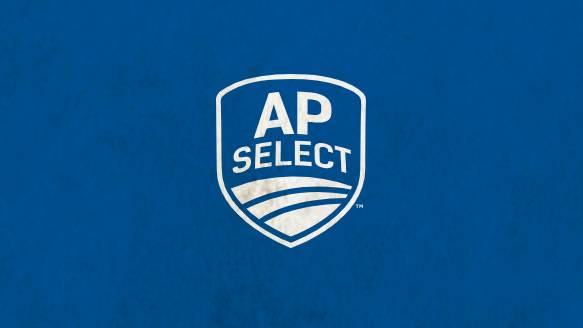Mississippi State Scientists on Nationwide Team to Digitize Crop Nutrient Management

Nolan Mullican, a plant and soil sciences master’s student, examines soil quality at the MAFES Pontotoc Ridge-Flatwoods Branch Experiment Station. Photo credit: Dominique Belcher
As planting season begins, farmers are testing their soil to determine the nutrients needed to grow their crop. Mississippi State scientists and colleagues from nearly 50 universities, the U.S. Department of Agriculture, non-profit organizations and industry partners released a new tool to help decipher the nutrients needed.
Vaughn Reed and Jagmandeep Dhillon, plant and soil sciences assistant professors and scientists in the university’s Mississippi Agricultural and Forestry Experiment Station, are members of the national team that built the Fertilizer Recommendation Support Tool, or FRST.
The decision-aid tool provides an unbiased, science-based interpretation of phosphorus and potassium values in soil tests across 40 states and Puerto Rico.
“Soil testing and protocols as well as nutrient recommendations vary by state while the acres of an individual farm may cross state lines,” Reed said. “FRST was developed in response to the pressing need to harmonize soil testing across state boundaries. It represents an improvement in our ability to evaluate soil test correlation.”
Crop specific fertilizer recommendations based on soil tests have a long shelf life, generally only updated every 20 years. FRST is the first national database to archive soil test correlation providing a baseline of data and ensuring the information is not lost as scientists retire, Reed added.
FRST currently stores phosphorus and potassium information, two of the big three in crop fertilization, with nitrogen completing the trio. Phosphorus is a building block of DNA and RNA and helps with root development, increases resistance to disease and contributes to flower development. Potassium controls water regulation and helps plants respond to stress.
The new tool represents a significant advancement in soil testing for phosphorus and potassium and nutrient management that uses data from across the U.S. Researchers hope the tool’s precise soil test calibration might one day contribute to significant annual savings for farmers across the country while also reducing excess nutrient losses to the environment.
“We believe that FRST will not only benefit farmers by improving farm economics and conservation practices but also contribute to global sustainability,” Jagmandeep Dhillon said.
While the tool is primarily for researchers, farmers will also benefit by comparing results from the tool to their specific nutrient recommendations.
Nathan Slaton, soil science researcher at the University of Arkansas and a leader on the project said the tool helps anyone interested in calibrating traditional soil tests.
“Anyone can use this web-based tool to check their soil-test-based fertilizer recommendations against the FRST research results relevant to their crop, soils and geographic area.”
The current version of FRST includes data from nearly 2,500 phosphorus and potassium trials for 21 major agricultural crops. In the next phase, FRST will provide research-based phosphorus or potassium rate response information to assist farmers in selecting the minimum fertilizer rate expected to produce maximal crop yield.
Funding for the FRST project has been provided by the USDA-NRCS including the Conservation Innovation Grants, USDA-ARS, USDA-NIFA and OCP North America.
For more information about FRST, visit https://soiltestfrst.org and click on “Tool.” For more information about the Mississippi Agricultural and Forestry Experiment Station, visit www.mafes.msstate.edu.






